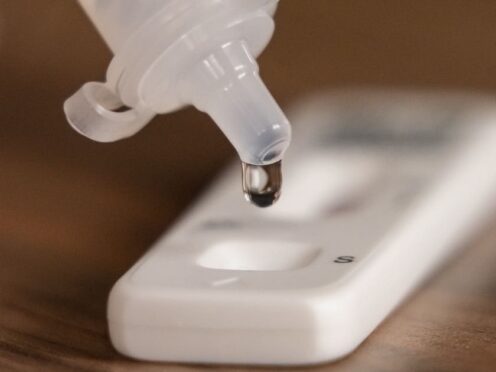
The mother of a schoolgirl who is too ill to leave the house after developing a Covid-linked condition has accused officials of deliberately withholding information about the illness.
Helen Goss, whose daughter was seven when she caught Covid-19 at the start of the pandemic, told the Scottish Covid-19 Inquiry her daughter developed a “really scary” illness a few weeks after she recovered from a mild Covid-19 infection, which saw the previously active girl become lethargic, sensitive to light and sound, and, eventually, unable to leave the house at all.
She said she felt she was “under suspicion” over the cause of her daughter’s illness as she fought for two years for clinicians to acknowledge it, and it was only in 2022 that it was diagnosed as suspected Paediatric Inflammatory Multisystem Syndrome (PIMS), an illness that can follow a Covid-19 infection in children.
Ms Goss, who suffers from long Covid herself, said this stemmed from a “big reluctance” on the part of the medical establishment to diagnose PIMS, leading them to write it off as caused by “isolation and anxiety”, which she described as “so infuriating”.
She alleged emails existed to show that senior decision-makers in the NHS and UK Government were aware of PIMS at the time, but they had chosen to suppress this so as not to alarm parents.
Ms Goss said: “In their ivory towers they decided they weren’t even going to tell the public that this condition even existed, which I think is stupid.
“If I’d known what she was suffering from I would have taken her straight there, I wouldn’t have hesitated.
“The context of fear around that time, ‘don’t go near the hospital, save the NHS’, I would have just completely ignored all that and taken my kid to get medical treatment.”
A visible emotional Ms Goss added: “If they had informed parents then I would have taken her in and its very possible that she, with treatment early, maybe she wouldn’t be so sick now.”
Ms Goss is currently taking legal action against NHS Grampian for its conduct in her case.
Earlier, the inquiry heard evidence from a care worker who said residents died in “droves” when untested patients were transferred from hospital to her care home during the pandemic.
The witness, who was giving evidence anonymously, said the death rate rose from one person every couple of months to as many as three people per week once the untested patients started to arrive.
She said of the period around March and April 2020 when patients first started to be transferred in: “We would have residents in the home who would pass away maybe every couple of months, but when these patients started coming in from the hospital they were passing away in droves.
“It was like every week one, two or three people a week, if that.”
She also told the inquiry that during the first lockdown the care home she worked in lacked sufficient stocks of PPE, resulting in staff being instructed to re-use single use masks, and having to bring in their own hand sanitiser as there was none available.
She explained that early on in the pandemic the cupboard where the PPE was stored was kept locked to prevent staff from getting to it, and staff on night shifts had no access to PPE because the administrator who controlled cupboard access did not work at night.
She said: “At first when we tried to access any PPE we were told we were using too much too quickly, so it started to get locked into the cupboard downstairs, so you would have to go to the administrator to ask for more PPE if you needed any more.”
The inquiry also heard from Emma McConnachie, a self-employed podiatrist, who described how private healthcare providers struggled to access PPE, vaccinations and the latest guidance despite having been asked by the NHS to stay open in order to continue providing services.
She described the “battle” her staff faced when trying to get vaccinated early in the pandemic, as a result of information about how to to get the vaccine not being available to healthcare professionals outside NHS and social care settings.
She said: “It was like gold dust trying to find that phone number. When I did find it and called it I was told you’re not eligible. You’re not NHS.”
A Scottish Government spokesperson said: “Our deepest sympathies go out to all those who lost a loved one during the pandemic.
“The Scottish Government is committed to responding to both the Scottish Covid-19 and UK Covid-19 inquiries, as learning lessons from the pandemic is vital to prepare for the future.
“It would be inappropriate to comment on the detail of evidence being considered by either inquiry while hearings are ongoing”.
Due to legal reasons, NHS Grampian said it is unable to comment.
The UK Government has been contacted for comment.
The inquiry continues.

Enjoy the convenience of having The Sunday Post delivered as a digital ePaper straight to your smartphone, tablet or computer.
Subscribe for only £5.49 a month and enjoy all the benefits of the printed paper as a digital replica.
Subscribe